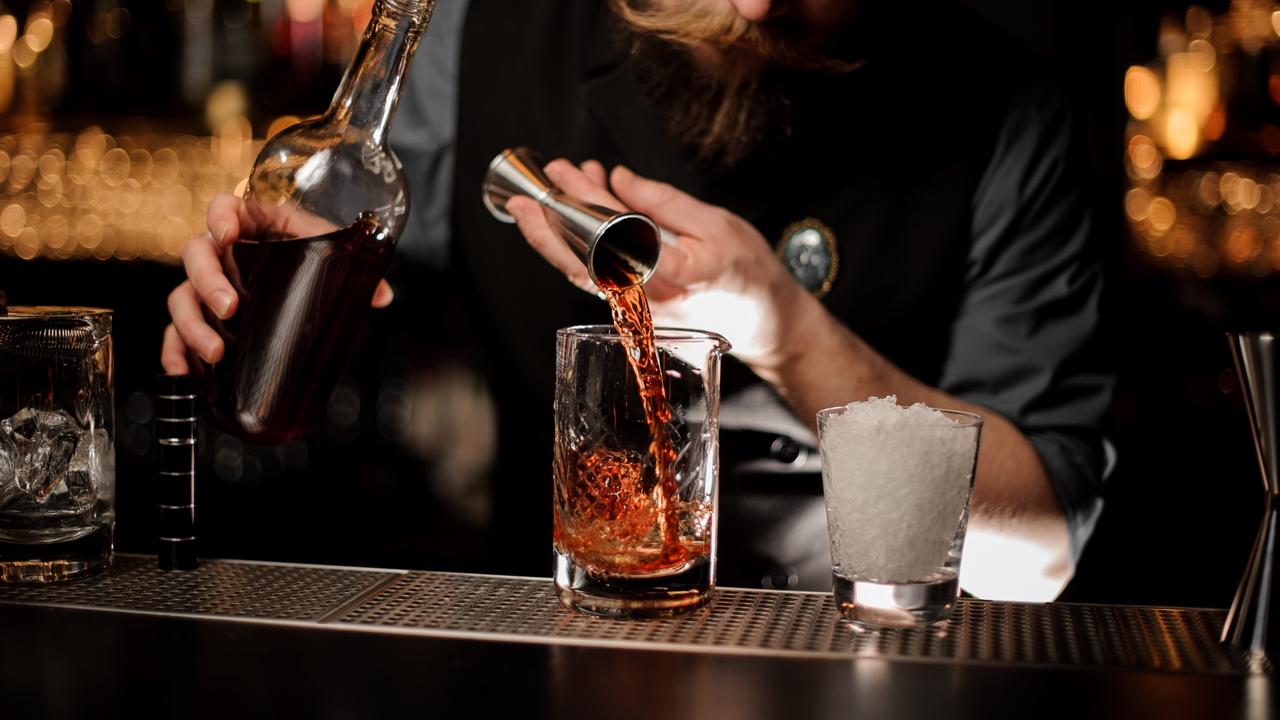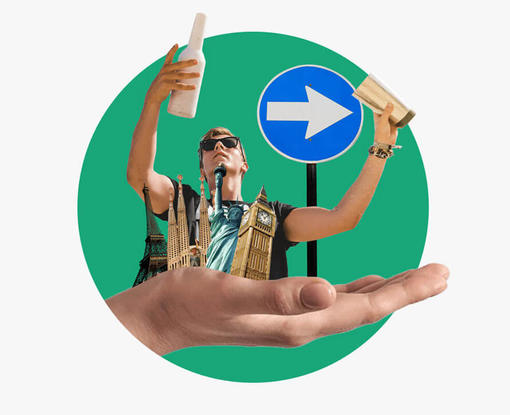A jigger is a type of bar tool used for measuring and pouring alcohol. Whilst bartenders also use the jigger for juices and syrups, it's primarily used as a measuring device for alcohol. The jigger is also referred to as a 'cocktail measuring cup' or 'double jigger' in the bartending world too.
It may be true that bartenders are turning towards the 'free pour' these days behind the bar, but this doesn't make the cocktail jigger obsolete! Learn all about the types, measurements and use of the jigger below...
Types of jigger
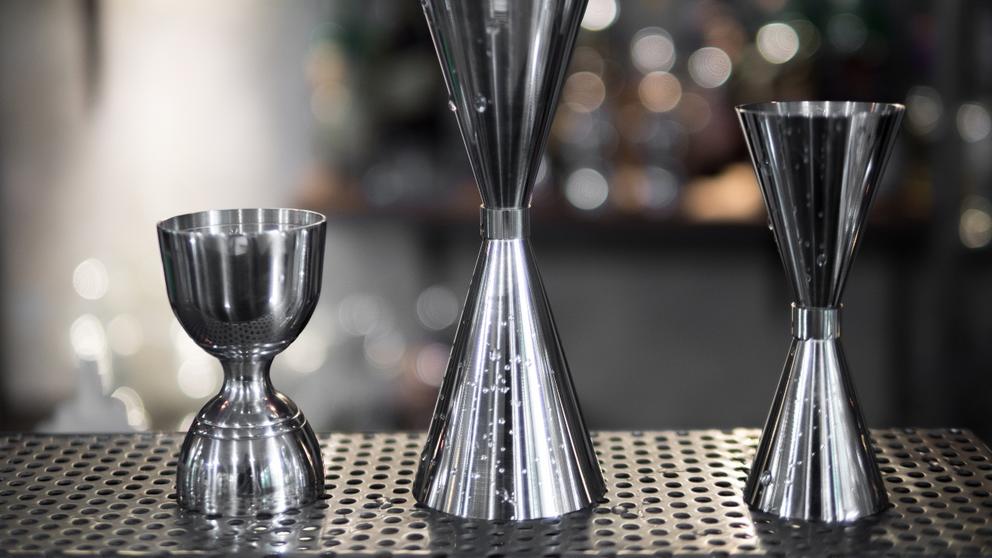
The jigger is one of the only bar tools whose functionality can translate to many different physical designs. Despite this luxury, there are only three styles of cocktail jiggers.
Hourglass Jigger
This type of jigger is arguably the basic bar jigger, seen commonly in bars. Its conical shape is easily recognisable to those who frequent in bars. Seemingly counterintuitive, it's also probably the most difficult to use, rarely featuring a rim and much easier to overflow than the other two styles of Jiggers.
Japanese Jigger
A taller, slenderer version of the Hourglass Jigger, the Japanese Jiggers look more professional and give you less chance of overpouring and overflowing. They sometimes come with marks inside the vessel itself, allowing for smaller measurements than just the two full measurements usually found in this tool. Super helpful, if you ask us!
Bell Jigger
These are small and stubby like the Hourglass Jigger; however, their measuring elements are bell or goblet shaped. These often feature a small lip, allowing less chance for you to be overpouring and overflowing, just like the Japanese Jiggers.
Variations of the jigger
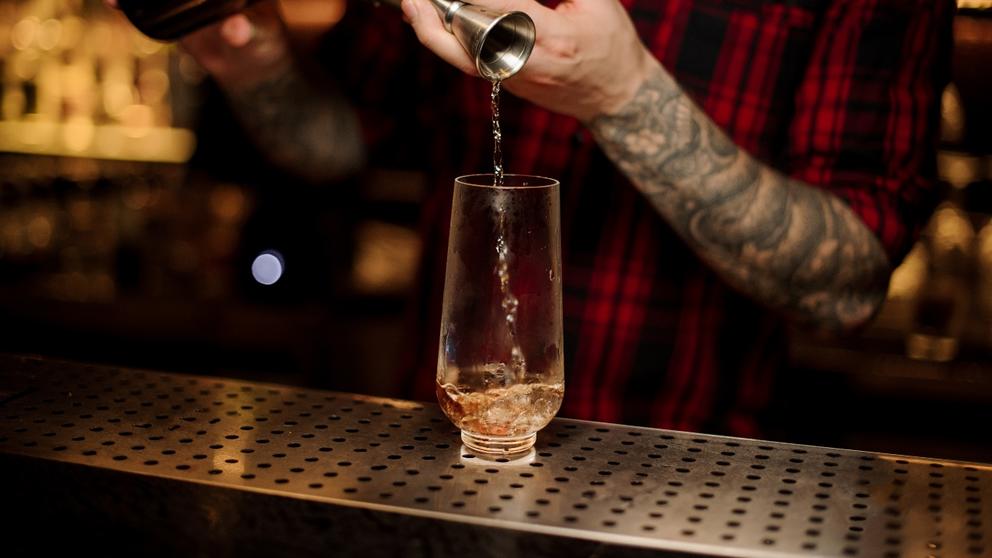
Between the cocktail jiggers there are some measurement and weight variations that will affect your decision. Here's the lowdown on the measurements and weights...
Jigger measurements
What is a jigger measurement? Great question! Typically, a standard jigger measurement is 1.5oz (44ml) in the taller vessel and 1oz (30ml) in the shorter vessel.
However, Jiggers now come in a variety of sizes, with one side almost always being half the size of the other. These tools are great for getting the drinks measurements perfect.
Jigger weight
A weighted tool can often make us feel more comfortable when using it. The Hourglass Jigger is extremely light, whilst Japanese and bell-styled Jiggers have more weight to them.
Deciding which double jiggers to get your bar is all down to personal preference. Take these two points into consideration when making that decision and you won't go wrong, however!
What's the difference between a jigger and a shot glass?
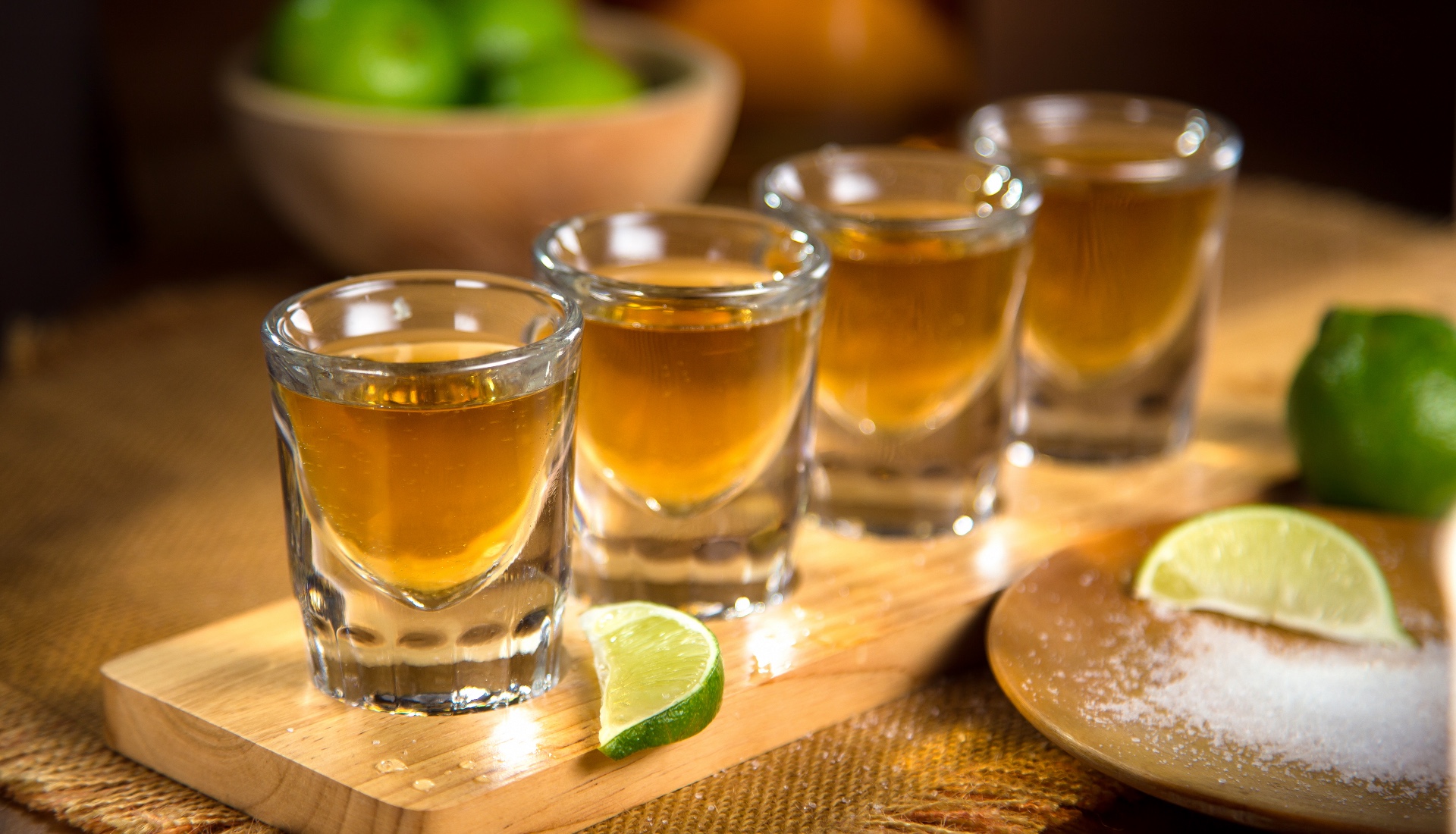
The main difference between a jigger and a shot glass is usage. A jigger is used to measure and pour liquids, a key bartending tool. A shot glass, however, is used as a glass to drink from. Bartenders wouldn't use shot glasses for measuring when bartending.
The other difference is the volume. There are variations in the volume of both jiggers and shot glasses. The standard jigger size is one and a half ounces. Similarly, so is the shot glass. However, variations means that some jiggers and shot glasses are more.
It's worth noting there is confusion within this topic. A 'jigger shot' is not equivalent to a shot glass measure. This is simply another way to express 'a shot', with more specification. A 'pony shot' is sometimes referenced to mean a shot glass measure.
How to use a jigger
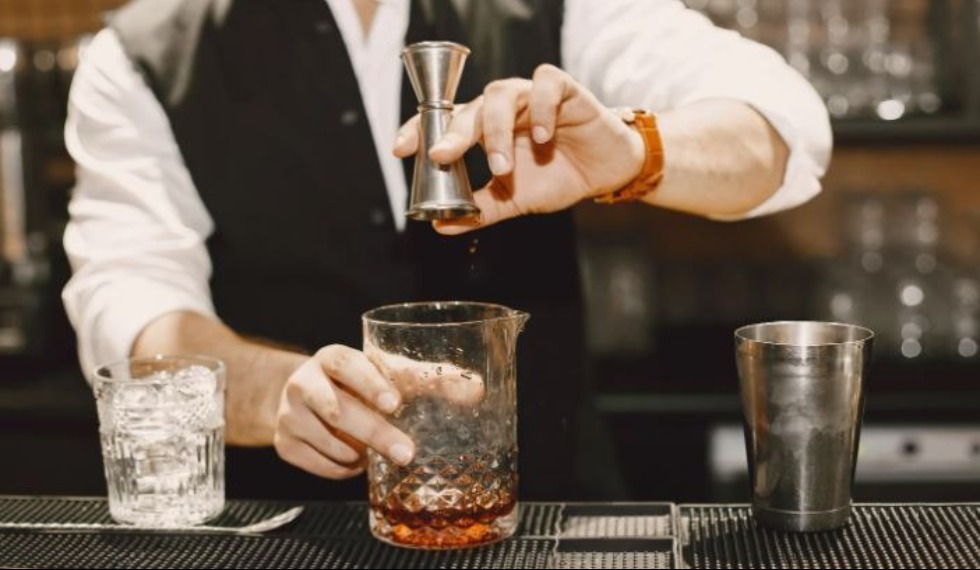
Luckily, all cocktail jiggers are used in the same way but it's practice that will see you use these bartending basics with grace. Here is a four-step guide to using a jigger correctly.
Step 1 - Slide the cocktail jigger between two of your fingers. Some prefer the index and the middle, whilst others prefer the middle and the ring. Make sure your palm is facing downward.
Step 2 - Hold the jigger level alongside the rim of the glass you're pouring into.
Step 3 - Using your other hand fill the jigger with your chosen liquid. This is the hardest part, not overpouring and overflowing the jigger.
Step 4 - Once the jigger is full, flex the finger closest to the glass downward, whilst tilting the jigger upward and over with the finger on the other side of it. Now, you've deposited your perfectly measured pour into the glass.
NOTE: Make sure to always wash the jigger after each cocktail. You wouldn't want a whiskey-tasting Piña Colada.
History of the cocktail jigger
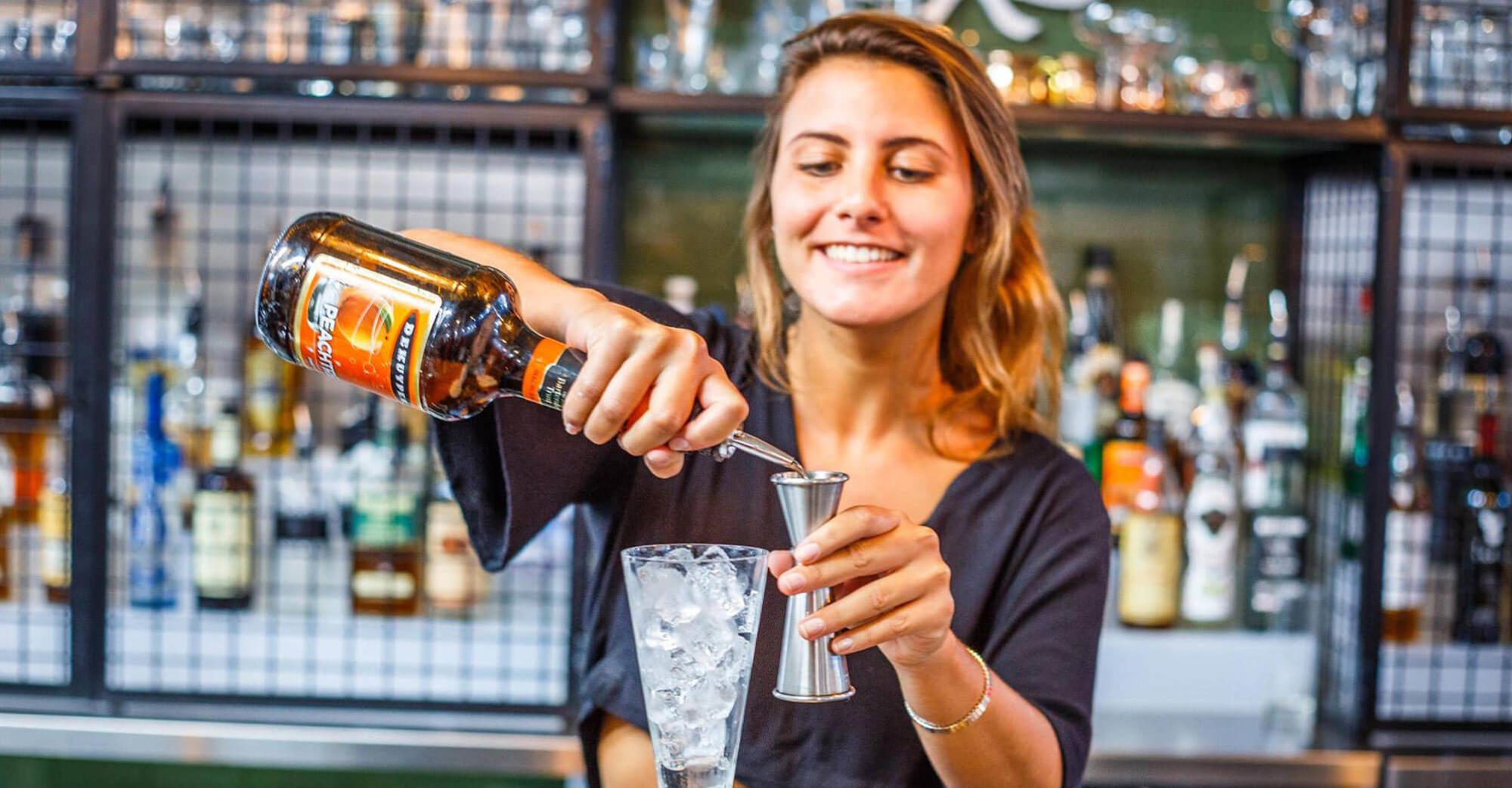
The concept of the cocktail jigger -a device to measure equal pours of alcohol- has been around for centuries. Navies around the world were especially big users of the tool, to carefully measure daily rations of spirits. Eventually, cocktail jiggers found themselves behind the bar, used to craft complex cocktail recipes.
The cocktail jigger was a key player during the cocktail revolution, but 'how did it get its name?', I'm sure you're wondering. Unfortunately, neither of the two theories have been completely proved, so it's up to you which one you tell your customers...
Why is it called a 'jigger'?
The first theory is that it was named after the smallest sail on a four-mast ship by sailors in the British Navy; maybe they were showing disapproval at the size of the rations?
The second theory of the jigger's name is that it was simply coined from the word ‘thingamajig' in American bars. This is the word used for objects that have no official name yet or forgotten. As the bars got louder throughout the night and customers more curious after a few drinks, the ‘thingamajig' was probably misheard…
Why use a jigger?
The use of bar jiggers may be required by law in some establishments or areas of the world. It's important to check this before you start flairing your free pour to awaiting customers.
Outside of the law, bar jiggers are best used for those complex cocktails. Cocktail recipes that need to be delicately balanced are crying out for a bar jigger. Free pouring is too risky for these cocktails. Mixologists, especially, will commonly use this bar tool when crafting their pieces of art.
Now you know what is a jigger, why not look into the other essential bar tools? Read our other articles about the Julep Strainer, Boston Shaker and bar spoon.
Want to start using the bar jigger measurements behind the bar professionally? Learn more about our bartender courses and start your journey.
